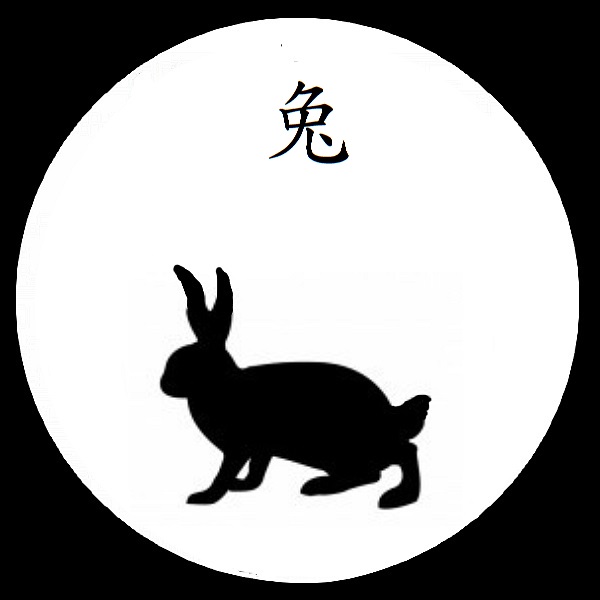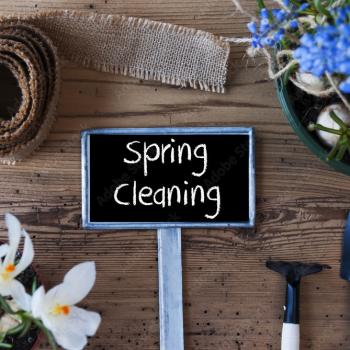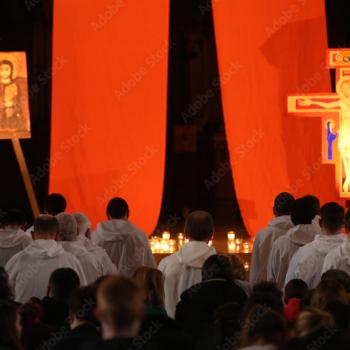
What we all know that Chinese New Year is celebrated by various Chinese communities around the world . It is the biggest holiday of the year and with good reason. There are rich traditions, customs and foods that have symbolic meanings including the year itself, which is represented by an animal. This year the Lunar New Year is celebrated starting January 22 with 2023 as the Year of the Rabbit.
In China and other Chinese communities around the world, the lunar new year holiday is celebrated for at least 15 days. Other Asian countries also celebrate this holiday but not as long. These countries include most Asian nations such as South Korea, Vietnam, and even Singapore. This article is going to briefly look at these various Lunar New Year traditions and customs that not only covers Chinese culture but also the other Asian cultures just mentioned.
Traditions of the Lunar New Year in Asian Communities
Of all the countries that celebrate the Lunar New Year, China, Taiwan and other Chinese-based communities in the United States and around the world have the strongest traditions and superstitions. in bringing in good luck and fortune for the new year . However other Asian communities also have their own traditions that are worth comparing and contrasting.
Here are the following:
Food: Not just for consumption, but symbology
In all Asian countries, food plays a huge role in everyday life. In some cases, the greeting is not ‘Hi, how are you doing?” but “Hi. Have you had something to eat?” It’s their own form of hospitality. With celebrations, food becomes more than what you eat for a meal. Each dish prepared has a special meaning. For the Lunar New Year, that special meaning translates to attracting good luck, long life, and fortune.
In the Chinese tradition for example, they have a dessert called tangyuan, which is a cold, sweet red bean soup ball dish. The word itself sounds like the word reunion. It makes sense because when this dish is made, particularly the rice balls, friends and family come together to create this unique dish (even some that have not seen each other for a long time).
There are also various traditions that eat some form of rice cake or another. They range from round discs to small tubes. They represent success and going forward into one additional year. As an example where this is significant, we turn to Korean culture. For not only the Lunar New Year, which they call seollal, and once January 1 turns on the calendar, all families eat a special rice cake soup called dokkuk. When eating this dish, it is said that one becomes a year older. So, instead of celebrating your birthdate every year, why not just add a year when it’s the next year automatically?
Dumplings are also quite common in all Asian dishes. They symbolize the exchange of the old and the new year. Regardless of the country and filling, they are fun to make with the family and very delicious fried, boiled, or in soups. The most common types of dumplings are pork or pork with scallions. However, you can also find recipes for other fillings such as chicken, kimchee, and glass noodles with meat.
Just as in Italian culture, noodles are very important to the Lunar New Year celebration . They symbolize long life and prosperity. The longer the noodles, the longer the life and more prosperity you will have. Even if cutting the noodles so they can be eaten easily works best for you, remember it’s very taboo and bad luck to do so. Why? Because it is said that your life could be cut short. So, if you are making any hot dishes with noodles and toppings, hot soups, etc., remember not to cut them.
Fish and seafood are usually the main meat in Asian cooking during this special time of year. They symbolize wealth and good fortune. It is why most restaurants have fish decorations or a fish tank by their door. In feng shui, having a fish symbol anywhere near the entrance of a place of business or even the home means that money will be flowing your way. In China, steamed fish is the common dish at a Lunar New Year meal.
Round fruits are another type of symbolic fruit are seen around the house and on tables in most Asian households. Any round shapes in Asian culture mean a constant circle and flow of life. Tangerines and mandarin oranges symbolize prosperity and abundance. They are not only eaten as a dessert or snack, but also given as gifts. Two oranges are usually given to guests of a host to symbolize double happiness and blessings.
Decorations to bring in the good vibes
The idea of feng shui was stated earlier in this article. This is the art and placement of objects, decorations, etc. around a business or home to help create the right flow of energy. If any part of the room or the place itself is stagnant, it means that something might be blocked or poorly placed which can cause some misfortune (most oftentimes serious health issues). With the Lunar New Year, decorating to bring in a good flow and good fortune becomes even more important.
The Chinese are masters at this decorating idea. They believe in decorating with the color red to not only symbolizes luck but to scare any monsters and demons away. Interestingly, this color (and not white) is worn at a wedding to symbolize good luck in the marriage according to cultural rules. The more red there is, the more luck is gained. Yellow is also a big color as it symbolizes fortune and money. There are also certain signs, symbols and animals that need to be put on walls and doors to welcome in the New Year. This includes dragons, the sign for spring, and even the animal for which the year will be celebrated.
In Vietnam, where they celebrate a form of the Lunar New Year called Tet, flowers and plants are big decoration items that can be found around the house as well as in places of business. It’s common to get peach and apricot blossoms which bring in good fortune and new beginnings. Vietnamese also use the color red, lanterns, and even stickers to honor the holiday.
Clothing is more than just everyday fashion
It’s not only ok to buy new clothing during the Lunar New Year, but it is a tradition to wear them as well. Why? Because it means one is making a new start. In Chinese-based cultures, wearing and buying red clothing is the most obvious (since it is the lucky color. However, if you are thinking about buying new shoes, don’t. It is considered bad luck because the word for shoes almost sounds like the Chinese word for someone sighing negatively.
In Korea, new clothing and high-fashion are the norm. In fact, it the most fashionable countries in Asia, if not the world. So, while buying new clothing is no big deal, what is a big deal is the clothing one needs to wear during the Lunar New Year holiday. That is known as the hanbok. This is a piece of traditional clothing that men, women, and children wear for all Korean holidays. It is very similar to the kimono in Japan but more complex and artistic.
Honoring Ancestors (both living and the dead)
Every Asian culture has their own way of honoring their ancestors (both living and dead). For the the living ancestors, and especially with the oldest, there is the tradition of begging for money by the younger generation and especially children. In China, its asking for money in a red envelope or packet (also known as hongbao in Mandarin. Most other Chinese-based countries such as Vietnam, Taiwan, etc. do the same but in their own ways. White envelopes are given in Korea as lucky money in an event called sebae.
In Vietnam, as well as most other Asian countries, going to, cleaning and decorating an ancestor’s grave is good karma. As they are cleaning the graves, they also spend time with them by talking to their loved ones and in some cases, offer a toast and prayers. Taiwan has a special day for cleaning the headstones and tombs called Tomb Sweeping Day for this same purpose.
Rice cakes are also used as offerings to the ancestors to not only invite them to eat their share of the food first, but also for their blessings into the coming year. In Korean culture in particular, rice cakes are offered in a special ceremony called jesa along with other various foods where the family pays a special homage to those that came before them. After the ceremony is done, the family then gathers to eat their portion of the meal.
New Year taboos that you should know about
There are several things one must not do when celebrating the Lunar New Year. Why? The will not only cancel out all the good luck you are trying to bring into the household (as stated above), but they also create more bad luck than you intended.
It’s obvious that Chinese culture would have the most taboos. The include not saying words that sound similar to death or other negativity. Using sharp objects is a no-go because it symbolizes cutting and separation. Washing, bathing or any kind of cleaning especially on the first day of the lunar new year because it means that you’ll be washing away all the good luck that you’re wishing for or gathered the previous year.
Korean culture has some interesting taboos. As in Chinese culture, washing ones hair is bad luck once the holiday starts. There is however an interesting taboo that need to take note. For example, as with staying up to countdown to midnight during the regular New Year countdown, Koreans do the same except that you need to stay up more than just midnight. It is said that the longer you stay awake at the beginning of the new year, the younger you will be. If you go to bed at midnight, consider your aging process to accelerate.
In Vietnam, there are also various superstitions that are similar to Chinese and Korean culture such as breaking dishes, knives, etc. One of their unique taboos where it is not a good idea to give away water or fire. Why? They are both essential elements that represent luck, fortune and bounty. They also have a saying about “money flowing like water” which means if you give some of that water away, you are interrupting the flow of fortune.
Conclusion
The Lunar New Year is a very special holiday season. It is a time of celebration. It is a time to do away with the negative and bring something positive in. As we are hopeful with the turning of January first of our new year, the Lunar New Year presents the same philosophy.
In this article, we looked at some of those various aspects of what makes up a Lunar New Year, not just from what is known in Chinese culture that everyone seems to be familiar with, but also that of other countries that are quite well-known such as Vietnam and Korea. This article is just scratching the surface of East Asia’s rich traditions and culture.
If you would like to learn more about the Lunar New Year, do your research. Click on the links in the article, watch YouTube videos, and even talk to those you know who are of Asian descent. Not only will you gain a more open mind to other holidays, but you could end up celebrating the New Year twice: once on January first and also the Lunar New Year (and maybe age a bit too).












